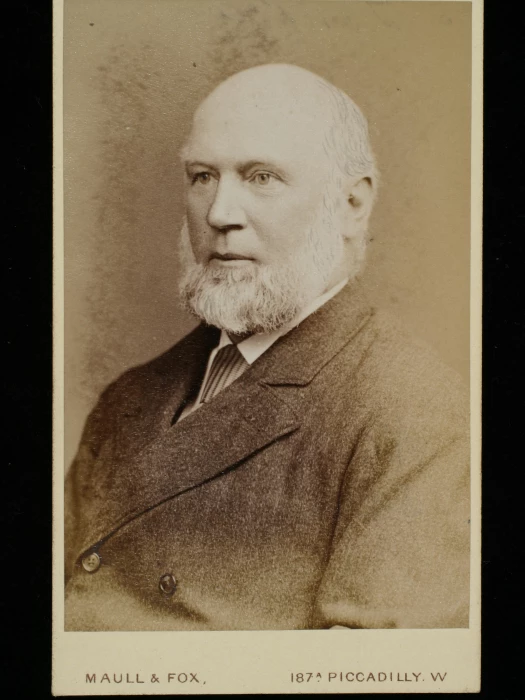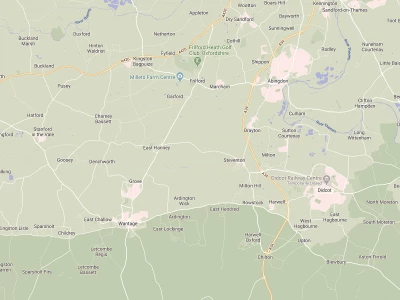Edward Davey
Edward Davey
By Sem Seabourne, recorded by David Johnston MP
The track can be heard here: Edward Davey
More information about Edward Davey can be found here: Edward Davey
More information about David Johnston MP can be found here: David Johnston MP
The text is as follows:
I’m David Johnston, the MP for Wantage and Didcot. A True Victorian – the story of Edward Davey.
Edward Davey was a famous Wantage resident and a remarkable man who lived in Wantage for twenty five years during the Victorian era from 1859 to 1884. He came from a family of high achievers who had lived in Dorchester, Oxfordshire for centuries. There are records of the Davey family in Dorchester dating from the sixteenth century. They were yeoman farmers in the hamlet of Overy with some notable achievements in the world of agriculture.
Edward’s great grandfather, William, built the manor house in Overy in 1712 and it still stands to this day bearing a plaque with his initials and that date. His grandfather, another William developed the crop rotation system and had a model farm so famous that even King George III himself came to view it. He founded the Oxfordshire Agricultural Society in 1800 was known as the most intelligent farmer in Oxfordshire. Edward’s father, George, was a famous cattle breeder winning prizes at Smithfield and he built the large farmhouse at Overy, also still standing.
The Daveys were one of the leading Roman Catholic families in Oxfordshire and the family houses contained a chapel for celebrating mass and priests were known to be hidden in the manor house. John Davey was Edward’s uncle and he built a small catholic chapel near the bridge in Dorchester when Edward was sixteen years old.
As a younger sibling Edward was not destined to pursue the family farming business, yielding to his elder brothers, but he had received an exceptional education at St. Edmunds College, Hertfordshire, Douai College in Normandy and Stoneyhurst College in Lancashire. He excelled in languages, winning a prize in French and passed his matriculation with first class honours. During this time he had developed interests in scientific subjects like geology.
In 1859 he married Sarah Ward from Staffordshire and he established a wine merchant business in Wantage, initially in Cat Street now called Alfred Street. This was a fairly inconspicuous location and he later moved to a more noticeable spot on the corner of Newbury Street and the Market place. From a business perspective he was quite high profile and apart from wines and spirits he also sold cigars, ale and insurance. This was extended to selling coal, a useful commodity with the burgeoning steam tramway establishing a service to Wantage Road rail station. In fact, Edward became a founder member of the Wantage Tramway Company with a stake of one hundred pounds.
His marriage to Sarah produced three daughters before she sadly died in 1869 and Edward remarried the daughter of another coal merchant from Bletchingdon, Teresa Turner. They went on to have six children, two of them later emigrating to Canada. A growing family needs more space and he moved his family to a larger house at number twenty Mill Street.
Now, you might think with a business on the market place and a big family Edward would be fully occupied; but you would be wrong, because he had interests that he found far more absorbing than the selling of wine and coal. The Victorian era produced a huge number of developments in the sciences and arts and the achievements of people like Charles Darwin, Michael Faraday, Joseph Lister, Louis Pasteur, Marie Curie and many others created a great public interest in the sciences. Victorians became great collectors of examples of geological history and natural wildlife, and Edward was no exception.
He had studied William Smith’s revolutionary map showing geological strata of the British Isles and Edward saw the special location of Wantage on the chalk line stretching from Norfolk to Devon and he knew that that meant fossils of ancient sea creatures could be found from over sixty million years ago when the area was covered by a warm ocean. So, he spent a great deal of time visiting quarries in the area where the different layers of chalk and clay could be accessed to find examples of ammonites, belemnites, sponges, corals, echinoids, etc. from our geological past. He was particularly fond of sponges and drew detailed diagrams of them in his journals. His journal reveals how he corresponded with the famous French physician and palaeontologist Louis de Fromentel on sponges and even visited him in 1875.
On one occasion he was exploring the Kimmeridge Clay layer near Swindon where he discovered the fossilised remains of an ichthyosaur which he sent to Sir Richard Owen the head of the Natural History Museum and the Royal Society.
One day whilst investigating a quarry at Chinham near Faringdon some workers told him about the local legend of a Roman villa near Challow. The farmer was trying to clear the stones to make his ploughing easier, but Edward saw another opportunity to discover something of archaeological significance. A huge Roman villa was discovered twenty five by three metres and Edward collected pieces of Samian Pottery, Roman Greyware Pottery, animal bones, oyster shells and coins from the period of Constantine the Great.
This experience stimulated another interest in Edward, that of ancient coins, and he became a much consulted expert in the subject, later becoming a founder member of the British Numismatic Society.
During his time in Wantage Edward gave many public lectures on his favourite subjects and regularly attended meetings of the Newbury Field Club; he was a member of the Archaeological Institute of Great Britain and elected a Fellow of the Geological Society in 1871. He wrote in his journal that his mission was “to educate the public about geology and to dispel superstitions that fossils were the result of a ‘great deluge’ or that ‘the world was created in seven days’”
Not surprisingly with so much of his time focussed on archaeology, geology, palaeontology and ancient coins his business fortunes suffered. He re-financed the business through a partnership with James Frogley who died in 1882, business stress being cited as a contributory cause. Edward was forced to sell up in 1884 and moved to Bath to live with relatives but his enthusiasm was undimmed. He became secretary of the Bath Royal Literary and Scientific Institution, the Curator of Bath’s Holbourne Museum, the organist at St. John’s Church, co-authored a book on Wantage history, and assisted His Majesty’s Government with his linguistic knowledge of eight languages by translating papers from Russian and Norwegian. He died at the age of ninety one having lived a very full life. A true Victorian.
In 2016 Edward’s Great Great Granddaughter and Great Great Great Granddaughter travelled from Philadelphia to visit the Vale and Downland Museum in Wantage to see his Journal and learn more about his life. The Vale and Downland Museum has further information and copies of Edward Davey’s book written in collaboration with another Wantage resident, Agnes Gibbons


